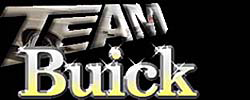Look to see if it has the right engine mounts. I think the later engines have side mounts and the earlier ones may not. Make sure the '37 crankshaft has the same configuration on the rear flange. Usually automatic and standard transmissions have a different sized rear hole. The one for a pilot bushing is smaller and the one that will fit the nose on the torque converter on the Dynaflow, which is larger. You might also look to see if the early block is drilled for all the oil filter lines that would be nice to keep. Do the oil pans look to be interchangeable? Make sure if they are not, that the sump is in the right place to work with your existing crossmember and steering linkage.



 Thanks in advance for the help here. I have a 47 Road Master that I've rescued from the scrap heap here (sitting since '71) with the 320 which I'm refusing to change over to anything but another 320. The original engine melted down and I found a good block with crank, rods and cam out of a 37 Century in very nice condition although frozen when I got it.(320). Will it work (with all peripherals bolting on) and bolt up OK? For some reason I thought I heard it would not work. I believe that I should be able to use the domed pistons and head (after having it checked and a valve job) out of the melted down engine I believe as they look OK. I've really been enjoying the posts here an modifying these engines although at this point I have to get something that functions on the cheap right now. These engines are getting hard to find aren't they!
Thanks in advance for the help here. I have a 47 Road Master that I've rescued from the scrap heap here (sitting since '71) with the 320 which I'm refusing to change over to anything but another 320. The original engine melted down and I found a good block with crank, rods and cam out of a 37 Century in very nice condition although frozen when I got it.(320). Will it work (with all peripherals bolting on) and bolt up OK? For some reason I thought I heard it would not work. I believe that I should be able to use the domed pistons and head (after having it checked and a valve job) out of the melted down engine I believe as they look OK. I've really been enjoying the posts here an modifying these engines although at this point I have to get something that functions on the cheap right now. These engines are getting hard to find aren't they!



Bookmarks